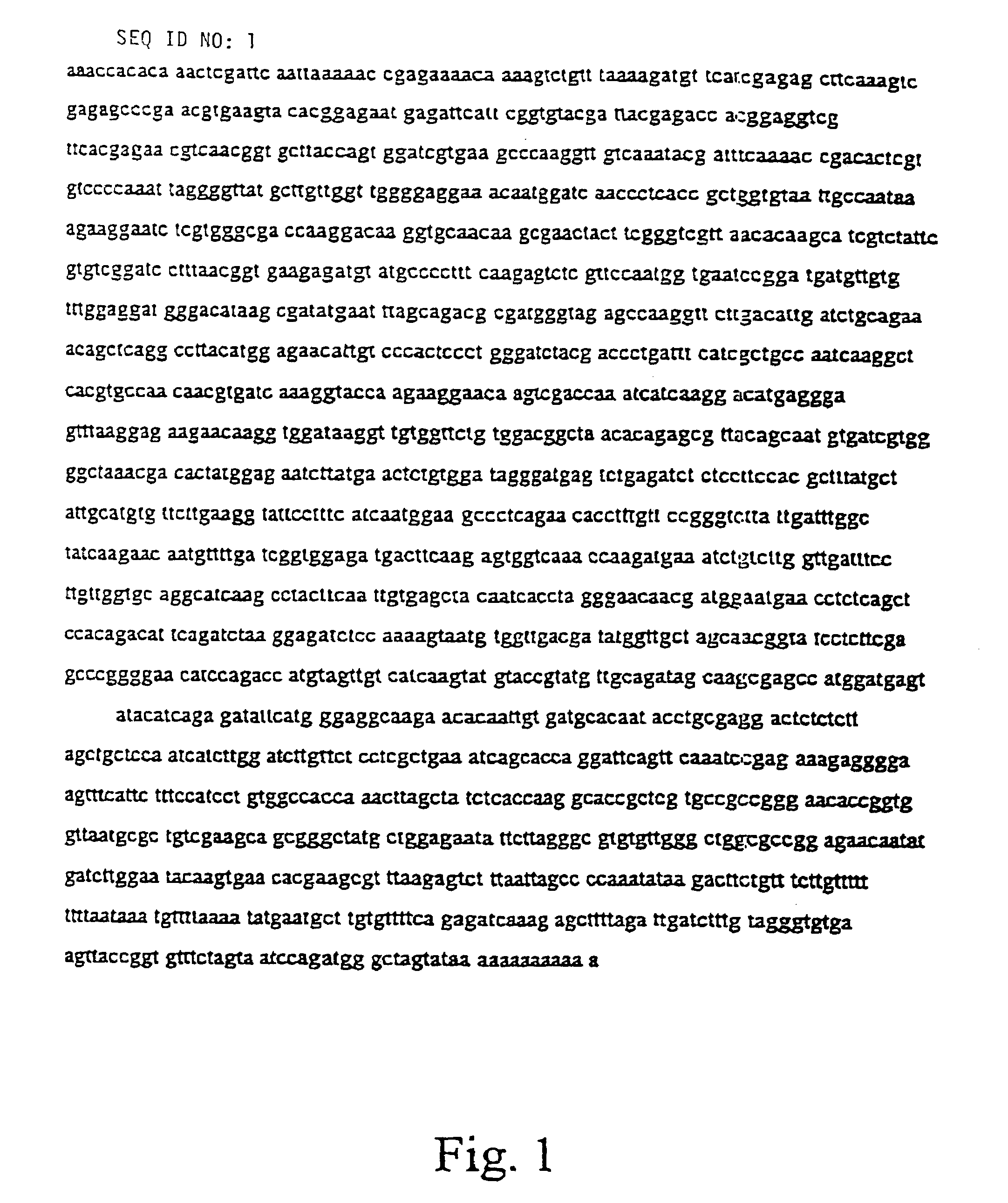Method for reducing phytate in canola meal using genetic manipulation involving myo-inositol 1-phospathe synthase gene
- Summary
- Abstract
- Description
- Claims
- Application Information
AI Technical Summary
Benefits of technology
Problems solved by technology
Method used
Image
Examples
Embodiment Construction
[0016]As used herein, the term “functional fragments” when used to modify a specific gene or gene product means a less than full length portion of the gene or gene product which retains substantially all of the biological function associated with the full length gene or gene product to which it relates. To determine whether a fragment of a particular gene or gene product is a functional fragment, fragments are generated by well-known nucleolytic or proteolytic techniques or by the polymerase chain reaction and the fragments tested for the described biological function.
[0017]As used herein, a coding sequence is “operably linked to” another coding sequence when RNA polymerase will transcribe the two coding sequences into a single mRNA, which is then translated into a single polypeptide having amino acids derived from both coding sequences. The coding sequences need not be contiguous to one another so long as the expressed sequence is ultimately processed to produce the desired protein...
PUM
| Property | Measurement | Unit |
|---|---|---|
| Gene expression profile | aaaaa | aaaaa |
Abstract
Description
Claims
Application Information
 Login to View More
Login to View More - R&D
- Intellectual Property
- Life Sciences
- Materials
- Tech Scout
- Unparalleled Data Quality
- Higher Quality Content
- 60% Fewer Hallucinations
Browse by: Latest US Patents, China's latest patents, Technical Efficacy Thesaurus, Application Domain, Technology Topic, Popular Technical Reports.
© 2025 PatSnap. All rights reserved.Legal|Privacy policy|Modern Slavery Act Transparency Statement|Sitemap|About US| Contact US: help@patsnap.com

